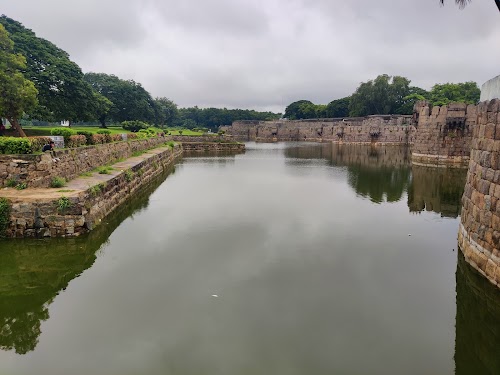
Vellore Fort
Vellore, India
- Explore the Jalakandeswarar Temple.
- Learn about the Vellore Mutiny.
- Photograph the fort's architecture.
- Visit the Vellore Fort Museum.
- Walk along the fort's ramparts.
Known for:
Description:
Vellore Fort, a magnificent 16th-century fort in the heart of Vellore, is a prime example of military architecture in South India. Enclosed by a wide moat, formidable walls, and massive gates, the fort showcases a blend of architectural styles, reflecting the influence of various dynasties that ruled over it. Within the fort complex, visitors can explore the Jalakandeswarar Temple, a beautiful example of Vijayanagara architecture, a church, a mosque, and a museum housing artifacts from the region's rich history. The fort's well-preserved ramparts offer panoramic views of the surrounding city, making it a photographer's delight. The serene atmosphere and historical significance make it a must-visit destination for history buffs and tourists alike. It's a great place to learn about the area's rich history.
History:
Vellore Fort has a rich and complex history, having been ruled by various dynasties including the Vijayanagara Empire, the Bijapur Sultanate, the Marathas, and the British. Constructed in the 16th century by the Vijayanagara rulers, it later fell into the hands of the Bijapur Sultanate before being captured by the Marathas under Shivaji. In the 18th century, the British East India Company gained control of the fort and used it as a strategic military outpost. It famously served as a prison for Tipu Sultan's family and the last King of Kandy, Sri Lanka. The Vellore Mutiny of 1806, considered a precursor to the Sepoy Mutiny of 1857, took place within its walls, marking a significant event in the history of British rule in India. The fort stands as a testament to the region's tumultuous past.